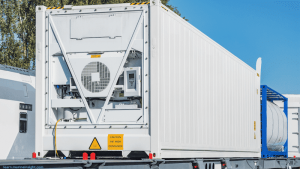Introduction: Understanding the Importance of Cold Chain Logistics
In the intricate dance of supply chain management, few processes are as crucial as cold chain logistics. This specialized branch ensures the safe transportation and storage of perishable goods, maintaining their quality and safety from production to consumption. From pharmaceuticals to fresh produce, the cold chain is indispensable in preserving the integrity of temperature-sensitive products. Cold Chain Chronicles: Navigating Refrigerated Logistics
The Complexity of Cold Chain Logistics
Cold chain logistics involves a myriad of processes, each vital for maintaining the integrity of perishable goods. At its core lies the need for precise temperature control throughout the supply chain, from manufacturing facilities to distribution centers and finally to retailers or consumers. Any deviation from the required temperature range can compromise the quality, efficacy, and safety of the products, leading to significant losses for businesses and potential health risks for consumers.
Temperature Monitoring and Control
Central to cold chain logistics is temperature monitoring and control. Advanced sensors and monitoring devices are deployed at every stage of the supply chain to track temperature fluctuations in real-time. Automated systems are programmed to adjust temperatures instantly, ensuring that perishable goods remain within the specified range. From refrigerated trucks equipped with GPS tracking to temperature-controlled storage facilities, every aspect of the logistics chain is optimized for maintaining the cold chain.
Challenges in Cold Chain Logistics
Despite technological advancements, cold chain logistics presents several challenges that require meticulous planning and execution to overcome.

Infrastructure Limitations
One of the primary challenges in cold chain logistics is the lack of adequate infrastructure, especially in developing regions. Insufficient refrigerated storage facilities and transportation networks can lead to delays and temperature excursions, jeopardizing the quality of perishable goods. Addressing this challenge requires investments in infrastructure development and the adoption of innovative solutions such as portable refrigeration units and cold chain technology hubs.
Regulatory Compliance
Stringent regulatory requirements add another layer of complexity to cold chain logistics. Different countries and regions have varying standards for the storage and transportation of perishable goods, necessitating meticulous compliance to avoid fines and product recalls. Moreover, regulatory frameworks are continuously evolving, requiring businesses to stay abreast of changes and implement necessary adjustments to ensure compliance.
Technological Innovations Driving Efficiency
Despite the challenges, technological innovations are revolutionizing cold chain logistics, enhancing efficiency, reliability, and transparency across the supply chain.
Blockchain Technology
Blockchain technology is gaining traction in cold chain logistics for its ability to provide immutable and transparent record-keeping. By leveraging blockchain, stakeholders can track the entire journey of perishable goods, from production to delivery, ensuring accountability and traceability. This technology not only enhances food safety but also streamlines compliance with regulatory requirements.
Internet of Things (IoT)
The Internet of Things (IoT) is transforming cold chain logistics by enabling real-time monitoring and predictive analytics. IoT devices embedded in refrigerated containers and storage facilities collect data on temperature, humidity, and other environmental factors, allowing for proactive maintenance and optimized routing. This proactive approach minimizes the risk of temperature excursions and ensures the integrity of perishable goods throughout the supply chain.
Conclusion: The Future of Cold Chain Logistics
As global demand for perishable goods continues to rise, the importance of cold chain logistics will only intensify. By addressing infrastructure challenges, ensuring regulatory compliance, and embracing technological innovations, stakeholders can navigate the complexities of refrigerated logistics with confidence. The future of cold chain logistics lies in collaboration, innovation, and a steadfast commitment to maintaining the integrity of temperature-sensitive products, ensuring they reach consumers safely and efficiently.


Recent Comments